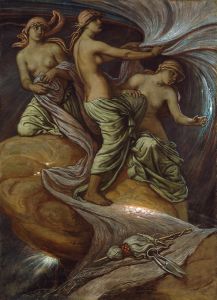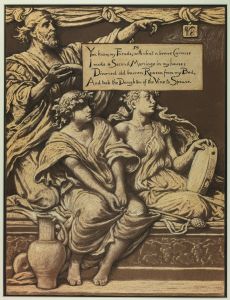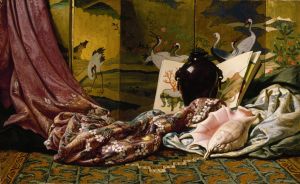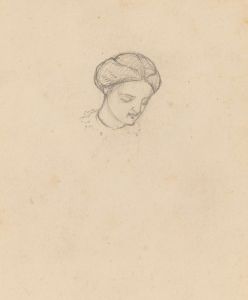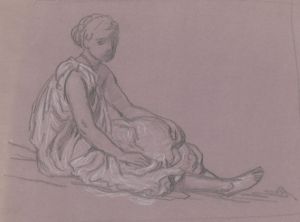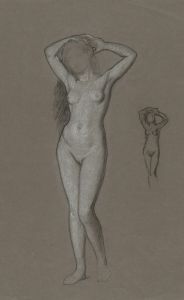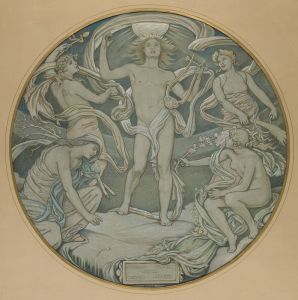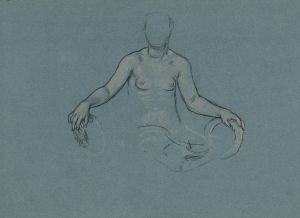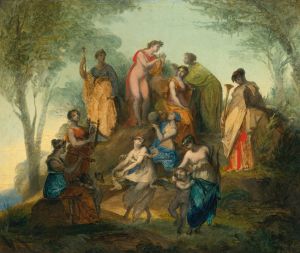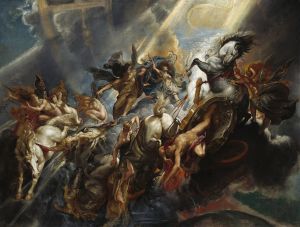
Apollo and Attendants.
A hand-painted replica of Elihu Vedder’s masterpiece Apollo and Attendants., meticulously crafted by professional artists to capture the true essence of the original. Each piece is created with museum-quality canvas and rare mineral pigments, carefully painted by experienced artists with delicate brushstrokes and rich, layered colors to perfectly recreate the texture of the original artwork. Unlike machine-printed reproductions, this hand-painted version brings the painting to life, infused with the artist’s emotions and skill in every stroke. Whether for personal collection or home decoration, it instantly elevates the artistic atmosphere of any space.
Elihu Vedder (1836–1923) was an American symbolist painter, poet, and illustrator, known for his mystical and allegorical works. One of his notable paintings, Apollo and Attendants, exemplifies his interest in classical mythology and his ability to blend symbolic themes with a unique artistic style. The painting depicts the Greek god Apollo, often associated with the sun, music, poetry, and prophecy, accompanied by attendants. The composition reflects Vedder's fascination with ancient mythology and his skill in creating dreamlike, atmospheric scenes.
The exact date of the painting is not widely documented, but it is consistent with Vedder's broader body of work, which often drew inspiration from classical antiquity and the Romantic movement. Vedder spent much of his career in Italy, where he was influenced by Renaissance art and the landscapes of the Mediterranean, which frequently informed his artistic choices. His works often explore themes of spirituality, the human condition, and the interplay between light and shadow, all of which are evident in Apollo and Attendants.
The painting is characterized by its harmonious composition and use of muted colors, which create a serene yet otherworldly atmosphere. Apollo is typically portrayed as a youthful and idealized figure, embodying the classical ideals of beauty and proportion. The attendants in the painting serve to enhance the narrative, though their specific roles or identities are not explicitly detailed. Vedder's attention to detail and his ability to evoke a sense of timelessness are hallmarks of his style, and this work is no exception.
While Apollo and Attendants is not as widely recognized as some of Vedder's other works, such as his illustrations for The Rubaiyat of Omar Khayyam, it remains an example of his dedication to exploring mythological and allegorical themes. The painting is housed in a private collection or museum, though its current location is not definitively recorded in public archives.
Elihu Vedder's contributions to 19th-century art, particularly his ability to merge symbolism with classical influences, have earned him a lasting place in the history of American art. Apollo and Attendants is a testament to his skill and his enduring fascination with the myths and stories of the ancient world.






